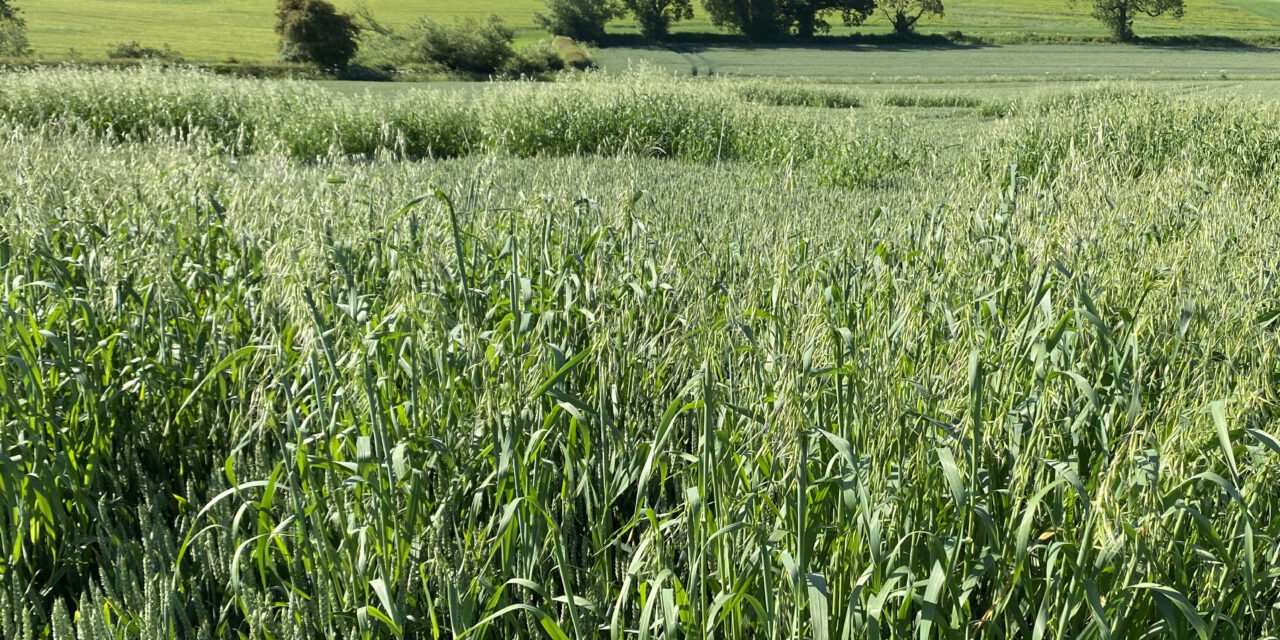Growers throughout the UK must adopt a range of chemical and non-chemical strategies to protect cereals from the increasingly problematic threat of wild oats this spring. That is the advice from ADAMA’s herbicide technical specialist, Dr Bill Lankford, who also urges spray operators to be extra diligent when treating advanced crops where a dense canopy could prevent herbicides from reaching underlying wild oat plants.
Wild oats, of which there are two species, are one of the most competitive grass weeds, with just one plant per square metre able to reduce winter cereal yields by 1%.
As with any weed, cultural and chemical tactics are needed to achieve adequate levels of control, with the prevention of seed production a priority, especially as the typical array of cultural controls commonly used to tackle weeds such as black-grass (later autumn drilling, spring cropping, ploughing) often prove less effective against wild oats due to the protracted emergence of both species and their ability to germinate from depths of up to 15cm.
 “Rogueing is therefore essential in crops which are heavily infested by wild oats,” advises ADAMA’s Dr Lankford who also advocates the use of weed mapping in June and/or July when the two species of wild oats are more easily identifiable: “One of the key difficulties in controlling wild oats is that the two species, Avena sterilis ssp. Ludoviciana (winter wild oats) and Aventa fatua (common, or spring wild oats), are almost indistinguishable prior to the emergence of panicles. Taking the time to identify which species are present and accurately mapping their location will therefore make it easier to establish effective control measures.”
“Rogueing is therefore essential in crops which are heavily infested by wild oats,” advises ADAMA’s Dr Lankford who also advocates the use of weed mapping in June and/or July when the two species of wild oats are more easily identifiable: “One of the key difficulties in controlling wild oats is that the two species, Avena sterilis ssp. Ludoviciana (winter wild oats) and Aventa fatua (common, or spring wild oats), are almost indistinguishable prior to the emergence of panicles. Taking the time to identify which species are present and accurately mapping their location will therefore make it easier to establish effective control measures.”
Dr Lankford also stresses the importance of maintaining good machinery hygiene to limit the spread of wild oat seeds and has seen good levels of control where crops have been established by direct drilling or with minimal soil disturbance as this can help to reduce the germination of dormant wild oat seeds.
Dr Lankford also recommends using an appropriate herbicide to spray off the worst affected areas prior to the shedding of seeds which typically commences from late June onwards: “While growers shouldn’t rely solely on herbicides such as Topik (240 g/L clodinafop-propargyl and 60 g/L cloquintocet-mexyl) to control wild oats in cereals, Axial Pro (55g/l pinoxaden) to control wild oats in barley, or Falcon (100g/L propaquizafop) in broad-leaved crops, chemical options such as these obviously play an important role. They should however be used with caution to maintain the required level of spray coverage and application accuracy.”
To maximise the efficacy of these and other wild oat herbicides, Dr Lankford offers the following advice: “Spray slowly at a sensible boom height and with an appropriate water volume to optimise coverage of the target weeds.”
He elaborates by explaining that “the efficacy of wild-oat herbicides is complicated by the vigorous spring growth rates of commercial crops which can produce a canopy which shields the emerging wild-oats from spray treatments. Competing spray requirements during the spring also put additional pressure on sprayer workloads, with growers often opting to apply a lower water volume at a high forward speed to cover more ground within a specific window of opportunity.
“This can be counter-intuitive when tackling wild oats where getting the optimal biological efficacy from the herbicides being applied is essential. Products such as Topik should therefore be applied in a way that ensures maximum spray coverage: it might be feasible to reduce water volumes for early spring applications when wild oat plants aren’t protected by the crop’s canopy, but for applications beyond GS31 growers must use at least 200 litres of water per hectare. They should also consider if their nozzle choice will adequately enable the spray to be deposited on wild oat leaves in the crop canopy and should set the boom height to 50cm above the canopy and restrict the sprayer’s forward operating speed to no more than 12kph to ensure full coverage.”
Irrespective of which growth stage wild oat herbicides are applied, Dr Lankford concludes by advising that the best results will be achieved when sprays are made during good growing conditions as this aids uptake. He also recommends the inclusion of non-cereal break crops such as oilseed rape as this gives growers the opportunity to use additional herbicides including propaquizafop, quizalofop, cycloxydim, clethodim and propyzamide.




